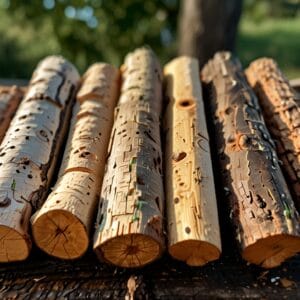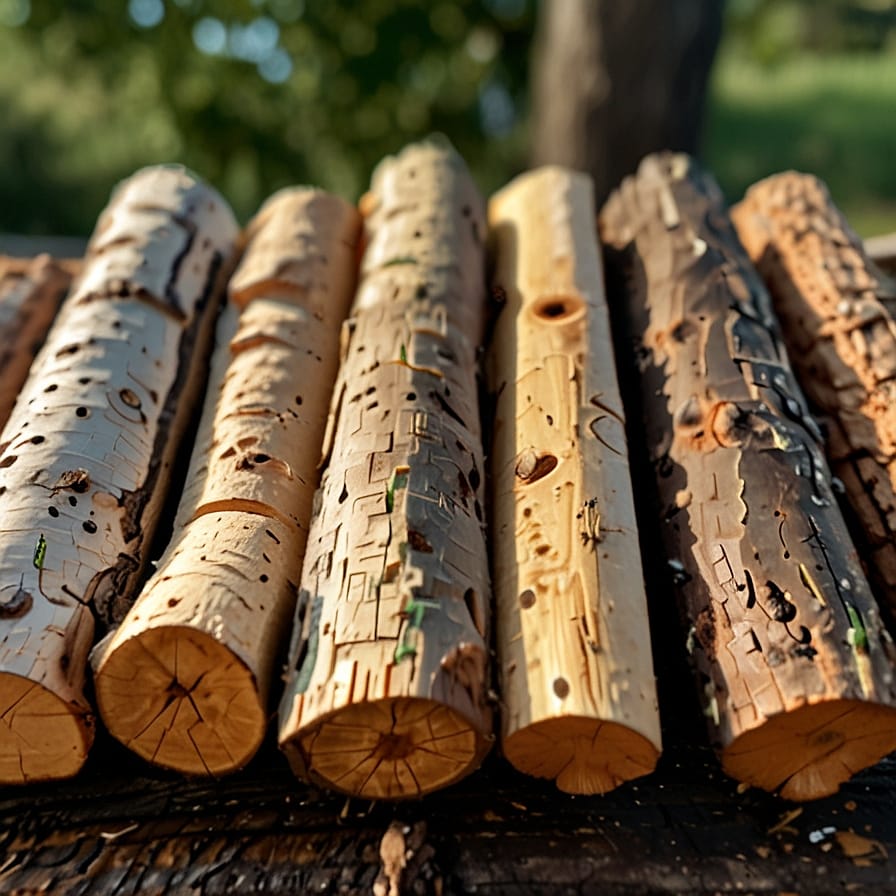Hackberry Firewood: The Hidden Treasure of Natural Warmth
Curious to learn some surprising facts about hackberry firewood you might not have heard before? How about rediscovering the magic of using wood for heating? Perhaps knowing the comfort and warmth this natural resource can provide will excite you. Additionally, as a carpenter, you might be interested in learning how hackberry wood can be used not just for heating, but also in making furniture and other wooden products. If you’re ready, let’s embark on a delightful journey into the world of hackberry wood.

The Hackberry Tree: An Ideal Source of Natural Heating
Hackberry firewood is a medium-density hardwood with moderate BTU (British Thermal Unit) value. Although it doesn’t provide the intense heat of oak or hickory, it still burns well and is known as a popular firewood choice. It emits a mild, pleasant fragrance while burning and doesn’t produce many sparks, making it a safe option. Additionally, hackberry wood generally splits easily, making it user-friendly.
However, hackberry wood does have some drawbacks. Termites and other boring insects are attracted to hackberry wood, and it tends to rot. Therefore, it is not ideal for long-term storage, especially in damp conditions. This is an important factor to consider when using hackberry wood.
Benefits of Hackberry Firewood
Hackberry firewood is known for its moderate density and thermal value. Here are the main benefits of hackberry firewood:
- Easy Splitting: Hackberry wood usually splits easily, requiring less effort to prepare.
- Pleasant Aroma: It emits a mild and pleasant fragrance while burning, making it ideal for indoor use.
- Safe Burning: It doesn’t produce many sparks, reducing the risk of fire hazards.
Considering these advantages, hackberry firewood can be an attractive option for those who use wood for heating. However, there are some important points to consider when using this wood.
Disadvantages of Hackberry Firewood
Although hackberry firewood offers many advantages, it also has some drawbacks. Here are some of these disadvantages:
- Pest Issues: Hackberry wood is attractive to termites and other boring insects.
- Tendency to Rot: Hackberry wood tends to rot in damp conditions, making it unsuitable for long-term storage.
- Moderate Heat Value: Hackberry wood has a lower heat value compared to high BTU woods like oak and hickory.
Considering these disadvantages, it’s important to carefully evaluate before using hackberry wood. However, with proper conditions and careful storage, you can effectively use this wood.
Using Hackberry in Carpentry
Hackberry wood is also widely used in carpentry, particularly for indoor furniture and decorative items. Hackberry wood is easy to work with and provides a nice finish. However, due to pest and rot issues, special measures may be needed to protect this wood.
The grain structure of hackberry wood offers various advantages for carpenters. For example, furniture made from hackberry wood is light but durable. This makes it easier to move and place furniture. Additionally, the natural patterns and color tones of hackberry wood provide an aesthetic look in decorative items.
Projects You Can Do with Hackberry Wood
As a carpenter, there are various projects you can undertake using hackberry wood. Here are some of these projects:
- Indoor Furniture: The durability and aesthetic look of hackberry wood make it ideal for indoor furniture. Tables, chairs, and cabinets can be made from hackberry wood.
- Decorative Items: The natural patterns and color tones of hackberry wood are perfect for decorative items. Frames, shelves, and ornaments can be made from hackberry wood.
- Crafts: Hackberry wood is also suitable for craft projects. It can be used in wood carving, sculpture making, and other craft projects.
Storing and Drying Hackberry Firewood
Effective use of hackberry firewood requires proper storage and drying methods. Here are some tips for storing and drying hackberry firewood:
- Dry and Ventilated Area: Hackberry wood tends to rot in damp conditions, so it’s important to store it in a dry and ventilated area.
- Pest Protection: Termites and other insects are attracted to hackberry wood. Therefore, it’s necessary to take appropriate measures to protect the wood from pests.
- Proper Stacking: Stacking the wood properly ensures good air circulation and allows the wood to dry properly.
Environmental Impact of Hackberry Wood
Using hackberry wood also offers some environmental advantages. Hackberry is a fast-growing tree and can be easily replenished with sustainable forestry practices. Additionally, using hackberry wood reduces the use of fossil fuels, thus lowering the carbon footprint.
Conclusion
Hackberry firewood, with its moderate density and heat value, is a good option for firewood. Its pleasant aroma, ease of splitting, and safe burning make it a popular choice. However, due to pest and rot issues, proper storage and protection methods should be applied. For carpenters, it offers an aesthetic and durable material for various projects. Discovering and utilizing this hidden treasure provided by nature will offer you many opportunities in both heating and creativity.
Thank you for reading this article. Take your place in the world of the natural warmth and durability offered by hackberry wood, and enjoy the delight of discovering and using this wonderful material!
